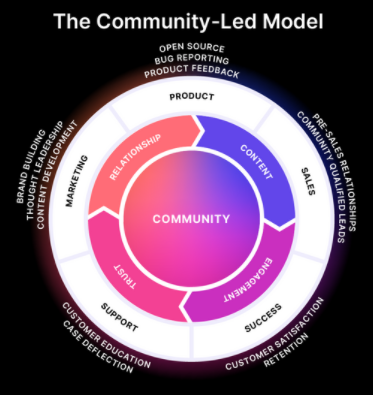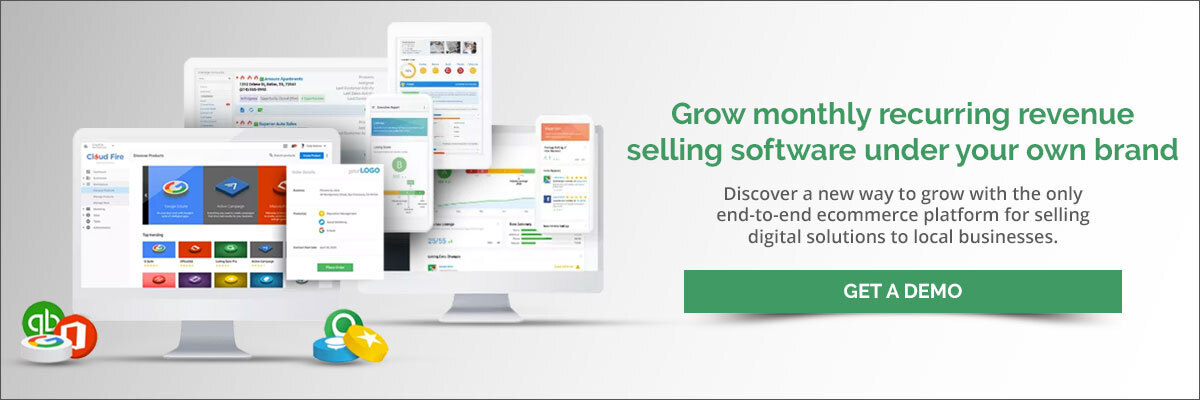How to Build and Manage a Branded Online Community
Digital customer engagement should be a vital part of your business strategy. Imagine the knowledge you could gather from putting all of your small-and-medium-sized business clients in a virtual room together.
You may want to consider a branded online community as a gathering place to increase customer or prospect engagement. Facebook, Twitter, Google, and Airbnb are just some big brands that stand testimony to how important online communities are to a successful business strategy.
At the onset, it should be understood that the initial benefit of investing in an online community is not always financial. In fact, most of the time, an online community will not bring direct financial results in the short term. Online communities are a space for clients to share ideas, hold discussions, and learn from each other. In turn, you learn from them.
Sanjay Sthankiya, a product manager at Vendasta says, “Clients love to hear from us, but they also really like to learn and absorb information from other clients.”
A community manager is in a unique position to gather marketing intelligence directly from community members, introduce new products and services to them, and engage with members. They facilitate discussion and activity on an online community platform ensuring that the experience is safe and positive for all members. An online community helps you learn what clients like or dislike about current offerings. It makes it easy to get an insider’s scoop on products and services your clients seek.
According to University of Michigan research from the Michigan Ross School of Business, there is a significant payoff for companies that set up their own online communities. They see as much as a 19 percent rise in incremental revenue earned from customers who joined the online community.
Online community building tips
In setting up the Vendasta Conquer Local online community, Sthankiya explains the initiative went through a number of iterations before becoming what it is today. “First we used Slack, an instant messaging platform, to facilitate discussions, but it was a closed-off, invite-only space that didn’t gain momentum. Then we partnered with Discourse, which is a popular online community type of software. We had a successful online academy at this time and it seemed intuitive to combine the community with it. But at that point we left Discourse and built our own platform,” he explains.
Step 1. Free sign-up
Free makes it easy. You want your community to grow. You’ll gain momentum quickly by building something that includes a free sign-up on your website. Quality people who are already interested in your company and products or services are likely to join the community.
Step 2. Create a forum
Facilitate discussions through an organized forum. This can be based on categories, topics, or whatever works best. Members can use the forum to ask questions, provide feedback, and communicate with each other. The key is making communication extremely simple. Businesses reap the benefits of learning how members use their products, where the products are lacking, and what services they think would be helpful moving forward. This kind of centralized marketing intelligence is a game-changer for product development.
Step 3. Combine with learning
Many branded business communities such as Conquer Local offer learning courses with the intention of educating community members on company offerings. The more knowledge members have, the more questions they ask, and the more likely they are to purchase. One of the popular courses in the Conquer Local Academy is How to Discover Your Product-Market Fit. Vendasta offers many other similar on-demand courses.
Step 4. Community sessions
Stay connected with weekly community sessions. Conquer Local meets every Friday to keep members continually engaged in real-time. By combining learning aspects with topical discussions led by a community manager at the same time each week, members can count on a regular touchpoint. It is also a great way to find out who are the most engaged members of your community.
Pro tip: Have clear expectations
Ensure that members understand the purpose of the community upon sign-up. This means setting expectations of participation around how members should communicate with each other and the value they get from community participation.
Benefits of building an online community
When it’s done right, the community holds many benefits for your business and clients. Having a community of your own can increase customer engagement and retention, provide learning opportunities, and improve customer support.
1. Content creation
Give members a voice by asking them to contribute content -- in the form of blogs, videos etc. Crowdsourced content from people who trust your brand is a great marketing tool. Praise coming from someone outside the company increases credibility. The Moz Community requests content from members, which is all posted within the community. The best content pieces are posted publicly as a branding boost for Moz, recognizes those who wrote the piece, and incentivizes other clients to participate.
2. Marketing intelligence
Community members join because they want to voice their opinions or hear the opinions of others. Imagine an online community as a think-tank with everyone focused on your company. Members provide insights related to the platform, plus products and services that you offer. With a forum in place, members help each other and give feedback about how they use your products.
3. New product and service introductions
A members-only community is a great place to gain product insights. Current customers can let you know what works or doesn’t work for them. They’re engaged with the business, know the current offerings, and provide helpful information.
4. Networking
Online communities offer a unique networking opportunity to clients and businesses. Clients learn from each other in a safe space, and you can engage with all clients at once in real-time. An increase in user engagement can be expected as communication between clients becomes more in-depth and frequent.
5. Client retention
People are more likely to be loyal to a company when they feel they are being heard. According to Daniel Hopper, a marketing blogger for Medium.com, community members might be motivated by a desire to interact, some might just seek knowledge, while others want support or encouragement in business. Like all communities, this creates a sense of belonging, but you need to make sure people feel they are being heard, so it’s important to monitor forums and respond to the community when required.
6. Client acquisition
When done correctly, the community fosters client acquisition. Through word of mouth from current clients, or through the additional support you provide within the community, prospects are more likely to see value in becoming members and participating.
7. Preferred customers
Members who contribute content, provide answers and feedback to others, and those who participate in community sessions might be considered your preferred clients. You can boost your business by encouraging them to become brand advocates outside of the community. They already love what you do for them, and want to grow their own businesses. Advocacy is a great opportunity for shared brand promotion.
8. Customer support
Community members join and participate because they see value in connecting and sharing knowledge with like-minded people. Members support and encourage each other so that everyone is successful. This can even save you support time as one-on-one training sessions and discussions decrease when clients work together to solve small issues. A community enables all to be supported and successful in business.
9. Increased cross-selling and upselling
Community-led growth helps to generate revenue. An advocating audience who trusts your product or service may be interested in purchasing more. From another perspective, by knowing these clients and their businesses, you can assess and perhaps even anticipate their needs and see gaps to be filled. The community gives businesses more intimate ways to connect with clients.
Read: 7 Reasons Why Agencies Should Join an Online Community.
Community-led growth
According to GetZelos, community-led growth is a go-to-market growth strategy built on the belief that clients have faith in that business or product and want to support it. Since clients typically support businesses they believe in, it's the responsibility of these businesses to make their journey from joining to interacting within the community as simple as possible.
In the long run, a community-led growth model will move you ahead of the competition. This business model is an ecosystem for content, engagement, trust, and relationships. According to CommunityLed (2020), “a community scales your business, resources, and presence in ways that traditional marketing or advertising channels can't.”
When creating a customer community, start by building content that is centered around topics that would interest your members, such as interesting facts about the industry, or tips and tricks that will help them to grow their business. Providing that value can increase engagement exponentially. By encouraging and fostering community engagement you build trust between the community manager and members and create meaningful relationships.

The outer ring of the above diagram shows how content drives product awareness and improves sales relationships, how engagement drives sales and customer success and retention, how trust drives improved support and marketing, and how relationships drive marketing success and product feedback. It’s a cyclical growth model that continuously feeds itself based on core community values and dynamics.
Online community support
Building and managing an online community is a big undertaking. Support is required to do it right and gain all the benefits. The Community Club is an online group meant for community managers. Through it you can learn directly from others who share the same roles and experiences.
There are support tools available, too, but the best approach is to create a platform that can grow with the community itself. IndieHacker has a list of 12 tools for building an online community. These include open-source platforms like Discourse and Circle that allow people to build their own platform.


